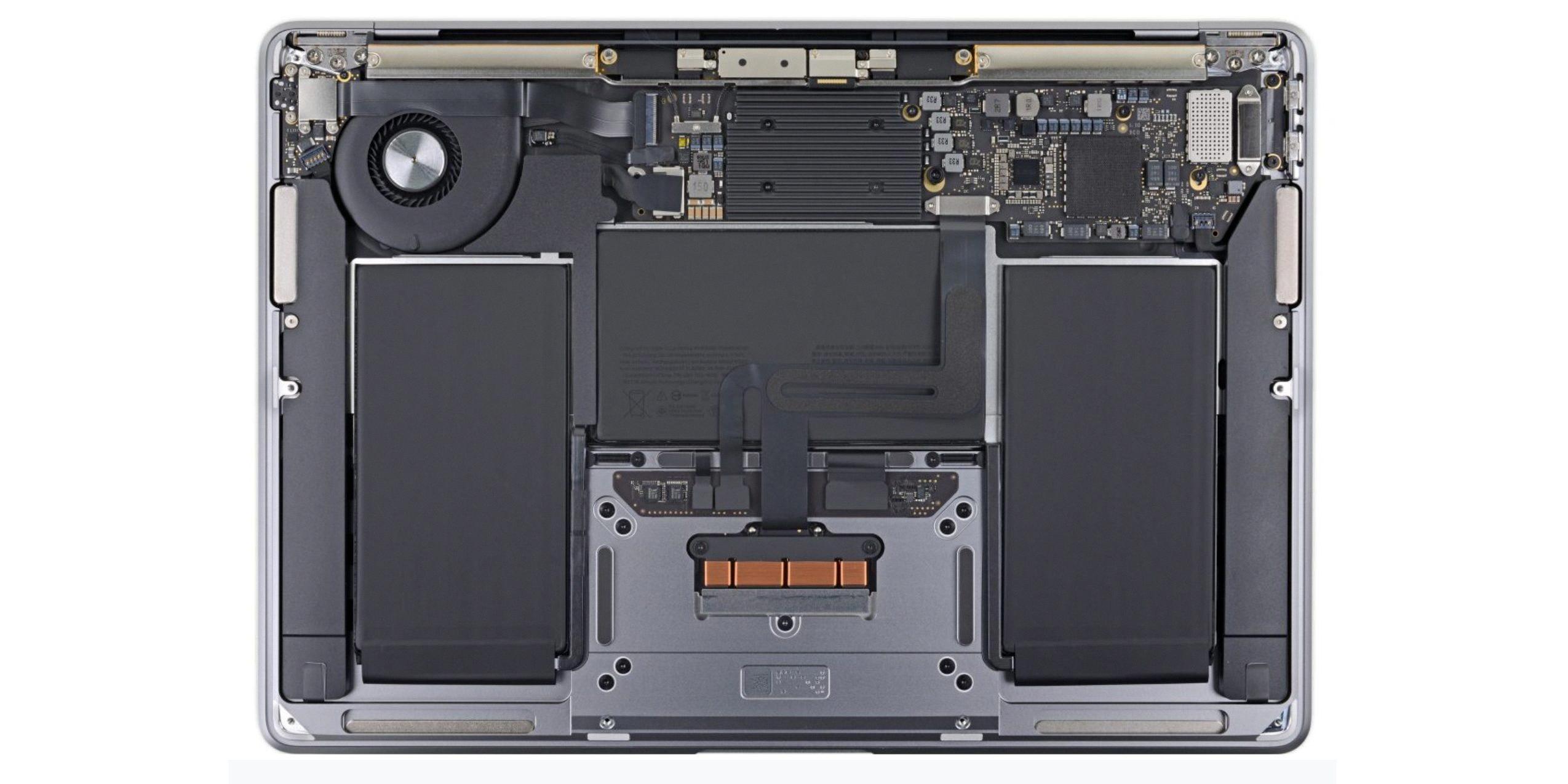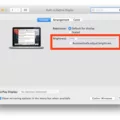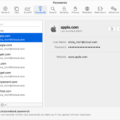Hardware is an essential component of any electronic device, including computers like the Mac. It refers to the physical parts or components that make up a computer system. In this article, we will explore what hardware is and where it can be found on a Mac.
When we talk about hardware on a Mac, we are referring to the tangible and visible parts of the computer. These components work together to enable the Mac to perform various tasks and functions. Let’s delve into some of the key hardware components found on a Mac.
1. Central Processing Unit (CPU): The CPU, often referred to as the brain of the computer, is responsible for executing instructions and performing calculations. It is located inside the Mac’s casing and is not visible to the user.
2. Random Access Memory (RAM): RAM is the temporary storage space that the computer uses to hold data that is currently being processed. It allows for quick access to data, which helps in multitasking and running applications smoothly. RAM modules are typically located on the motherboard inside the Mac.
3. Hard Drive: The hard drive is where all the data on a Mac is stored. It provides long-term storage for the operating system, applications, documents, and other files. In most Mac models, the hard drive is located internally and is not easily accessible to the user.
4. Graphics Processing Unit (GPU): The GPU is responsible for rendering images, videos, and animations. It is particularly important for tasks that require graphic-intensive processing, such as gaming or video editing. The GPU is integrated into the motherboard or may be a separate card in some Mac models.
5. Display: The display is the visual output device of a Mac. It allows users to see the graphical interface and interact with the computer. Macs come with various display types, including LCD, LED, and Retina displays, depending on the model.
6. Keyboard and Mouse/Trackpad: These input devices allow users to interact with the Mac. The keyboard is used for typing and executing commands, while the mouse or trackpad is used for navigating and controlling the cursor on the screen.
7. Networking Hardware: Macs are equipped with networking hardware to facilitate internet connectivity and communication with other devices. This includes Ethernet ports, Wi-Fi adapters, and Bluetooth modules.
These are just a few examples of the hardware components found on a Mac. Other components, such as the power supply, fans, and various connectors, are also important for the overall functioning of the computer.
To locate the hardware information on your Mac, you can access the System Report. Simply click on the Apple menu in the top-left corner of the screen, choose System Preferences, and then click on the About option. From there, you can click on the System Report button to open a detailed report that provides information about the hardware components present in your Mac.
Understanding the hardware components and their locations on a Mac can help users troubleshoot issues, upgrade certain components, or make informed decisions when purchasing a new Mac. By having a basic knowledge of hardware, users can better understand the capabilities and limitations of their Macs.
Hardware is the physical components that make up a computer system, and it plays a crucial role in the functionality of a Mac. Knowing where to find and understand the hardware components on a Mac can empower users to make informed decisions and effectively utilize their devices.
How Do You Find Hardware On Your Mac?
To find hardware information on your Mac, follow these steps:
1. Click on the Apple menu in the top-left corner of your screen.
2. From the drop-down menu, select “System Preferences.”
3. In the System Preferences window, click on the “General” icon.
4. In the sidebar on the left, you may need to scroll down to find the “About” option. Click on it.
5. On the right side of the window, you will see various information about your Mac.
– The “Model Name” will tell you the specific model of your Mac.
– The “Processor” will indicate the type and speed of your Mac’s processor.
– The “Memory” section shows the total amount of RAM installed on your Mac.
– The “Serial Number” provides a unique identifier for your Mac.
– The “Hardware UUID” is another unique identifier for your Mac’s hardware.
– You can also find information about your graphics card, displays, and storage devices under their respective sections.
Additionally, you can access a more detailed system report by pressing and holding the Option key, then selecting “System Information” from the Apple menu. This will open the System Information app, where you can explore even more hardware-related details about your Mac.
By following these steps, you can easily find hardware information on your Mac and gain a deeper understanding of its specifications.

What is the Hardware of a Mac?
The hardware of a Mac refers to the physical components that make up the computer. It includes various internal and external components that work together to provide the functionality of the Mac. Here are some of the main hardware components found in a Mac:
1. Processor (CPU): The central processing unit (CPU) is the brain of the computer that performs all the calculations and executes instructions.
2. Memory (RAM): Random Access Memory (RAM) is used to store data and instructions that the CPU needs to access quickly. It temporarily holds information while the computer is running.
3. Storage: Macs typically have solid-state drives (SSD) or hard disk drives (HDD) to store data, applications, and the operating system. SSDs are faster and more reliable, while HDDs offer higher storage capacities at a lower cost.
4. Graphics Processing Unit (GPU): The GPU is responsible for rendering images, videos, and animations. It offloads the graphical processing tasks from the CPU, making it essential for graphics-intensive applications and gaming.
5. Display: Macs come with high-quality displays that produce sharp and vibrant visuals. They may use technologies like Retina displays, which have a high pixel density for enhanced clarity.
6. Input Devices: Macs have built-in keyboards and trackpads for input. Some models also offer touch bars or touchscreens for additional input options.
7. Ports: Macs include various ports for connecting peripherals and external devices, such as USB, Thunderbolt, HDMI, and headphone jacks. These ports allow you to connect accessories like printers, external storage, monitors, and audio devices.
8. Networking: Macs have built-in Wi-Fi and Ethernet capabilities to connect to the internet and local networks. They may also have Bluetooth for wireless connectivity with other devices.
9. Audio: Macs include built-in speakers and microphones for audio playback and recording. Some models also offer headphone or audio line-out jacks for connecting external speakers or headphones.
10. Power Supply: Macs come with a built-in power supply or an external power adapter to provide the necessary power to operate the computer.
It’s important to note that the specific hardware components can vary depending on the model and configuration of the Mac.
How Do You Enable Hardware On Your Mac?
To enable hardware acceleration on your Mac, follow these steps:
1. Launch Safari, the default web browser on your Mac.
2. Click on the “Safari” menu located at the top left corner of the screen.
3. In the dropdown menu, select “Preferences.”
4. A new window will appear with various options. Click on the “Advanced” tab located on the top right corner of the window.
5. In the Advanced settings, you will find the option “Use hardware acceleration when available.” Make sure this option is checked or enabled.
6. Once enabled, Safari will utilize your Mac’s hardware to enhance its performance, especially when it comes to graphics and visual effects.
7. Close the Preferences window, and you’re all set!
Enabling hardware acceleration can improve the overall browsing experience by offloading certain tasks to your Mac’s hardware, resulting in smoother graphics rendering and faster performance.
Please note that hardware acceleration may not be available or compatible with all Mac models or software versions. In such cases, the option may not be present in the Safari settings or may be grayed out.
If you experience any issues or notice any performance problems after enabling hardware acceleration, you can always revisit the settings and disable it if necessary.
How to Do Hardware Reset On Mac?
To perform a hardware reset on your Mac, follow these steps:
1. Begin by shutting down your Mac completely.
2. Locate the power button on your Mac. The location of this button varies depending on the model of your Mac. It is usually found on the top right corner of the keyboard or on the back of the Mac.
3. Press and hold the power button for about 10 seconds.
4. Release the power button.
5. Wait for a few seconds, and then press the power button again to turn on your Mac.
By following these steps, you will have successfully performed a hardware reset on your Mac.
Conclusion
Hardware plays a crucial role in the functioning and performance of electronic devices. It encompasses various components such as the motherboard, processor, memory, storage, and input/output devices, which collectively determine the capabilities and efficiency of a device.
The MAC address, also known as the hardware address, is a unique identifier assigned to each device on a network, allowing for seamless communication and identification. It is essential for network administrators to have access to this information for troubleshooting, security, and management purposes.
Additionally, enabling hardware acceleration in web browsers like Safari can enhance the browsing experience by offloading certain tasks to the device’s hardware, resulting in faster and smoother performance.
When it comes to system settings, the General section in the System Preferences menu on a Mac provides access to various options and configurations. From here, users can manage and customize their device’s settings to suit their preferences and requirements.
Lastly, the process of erasing all content and settings can be useful when resetting a device to its factory settings or preparing it for resale. This feature ensures that all personal information and data are permanently removed from the device, maintaining privacy and security.
Understanding and optimizing hardware-related settings and configurations can greatly improve the functionality, performance, and overall user experience of electronic devices.








